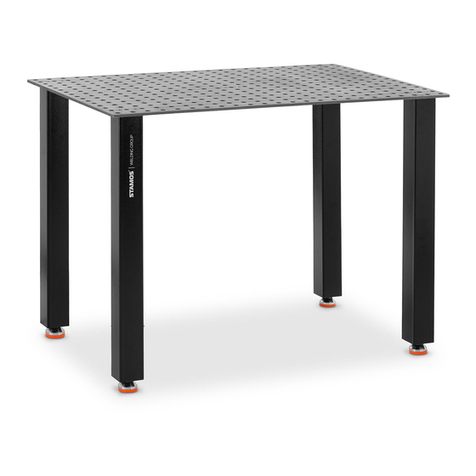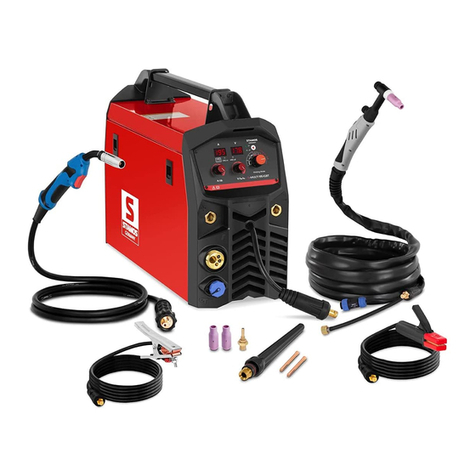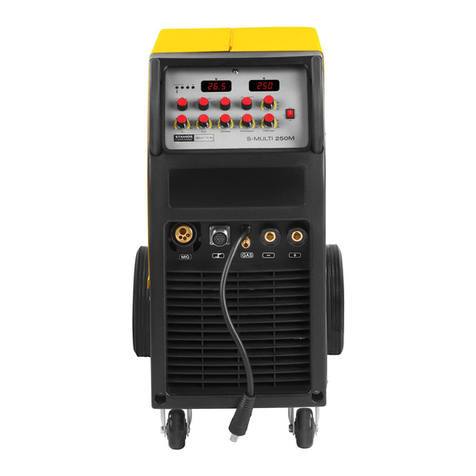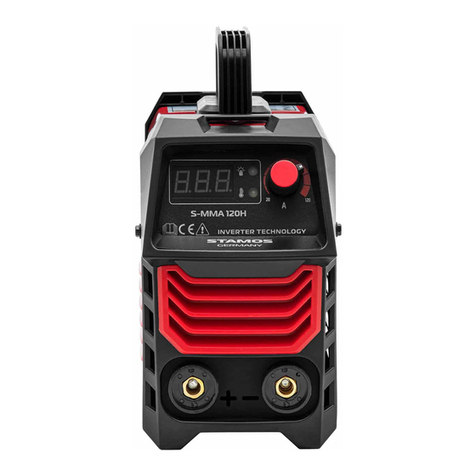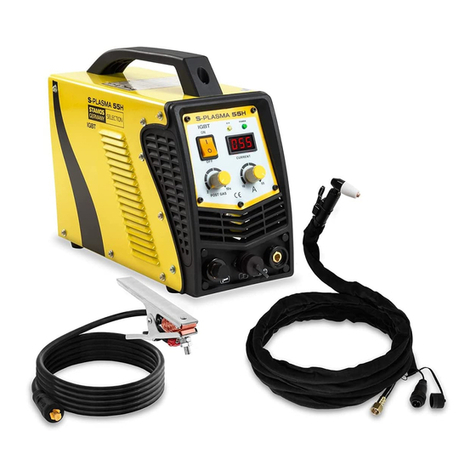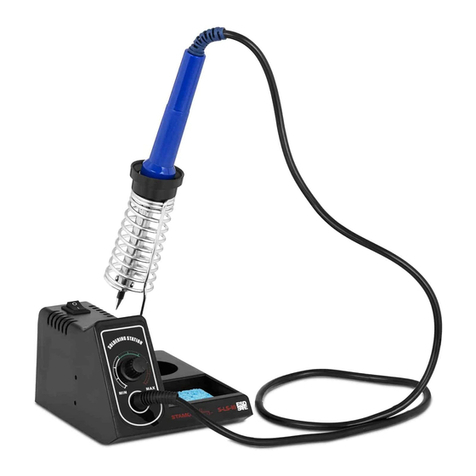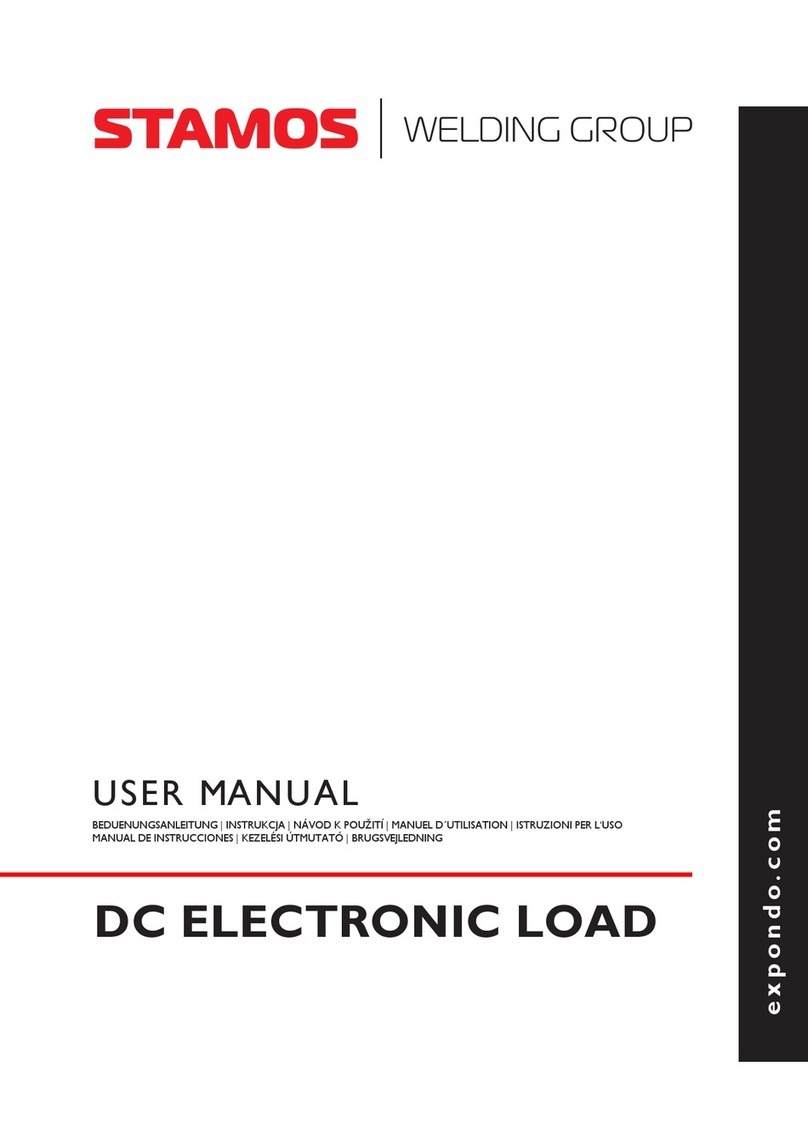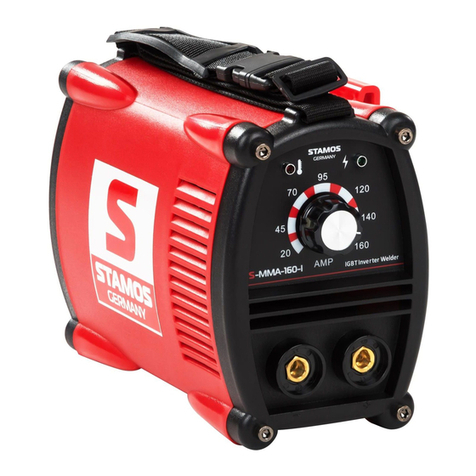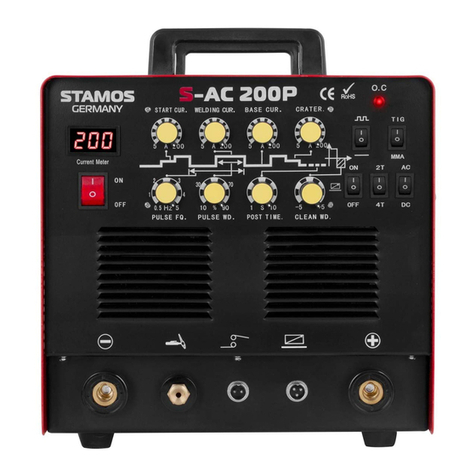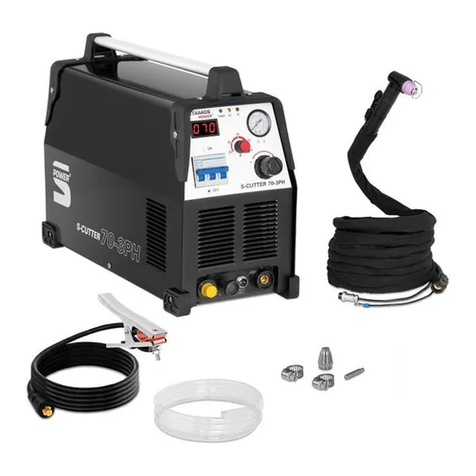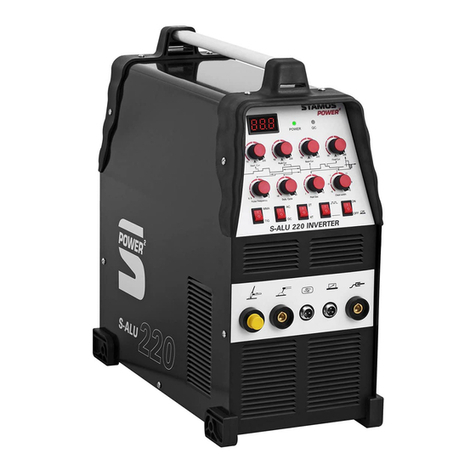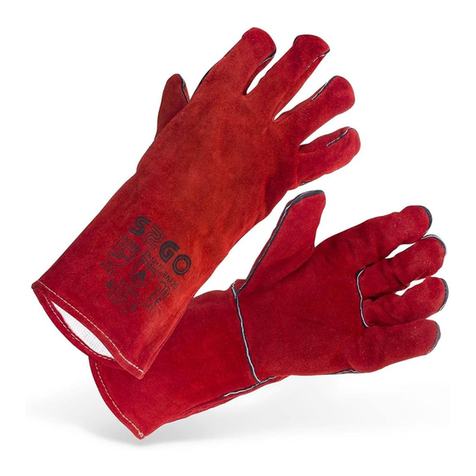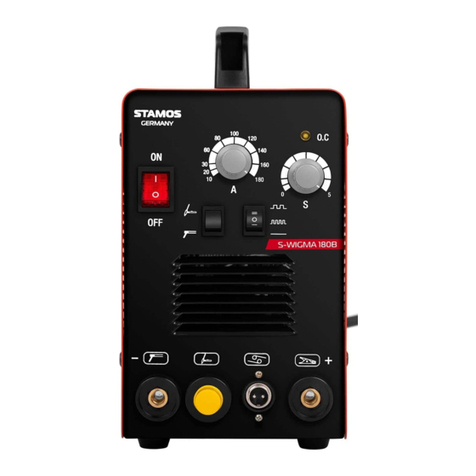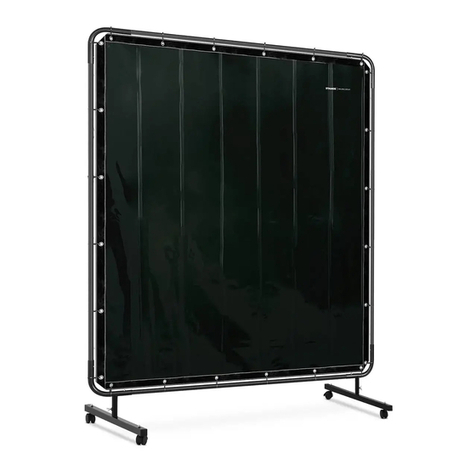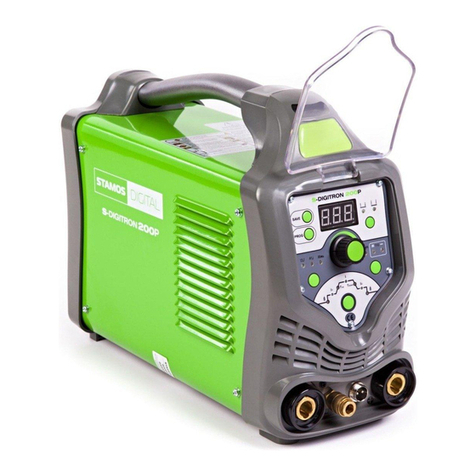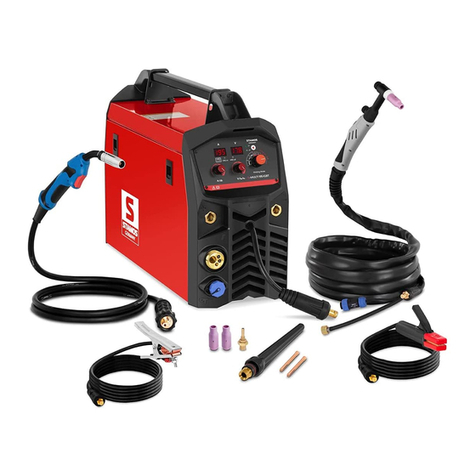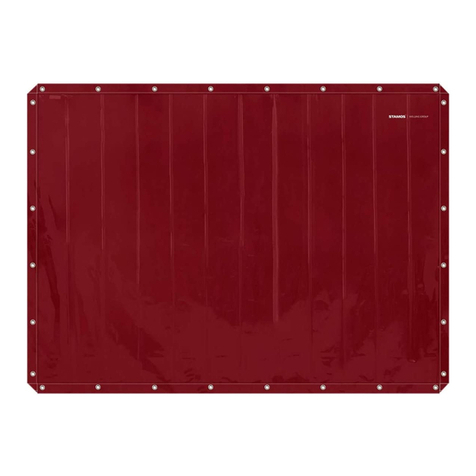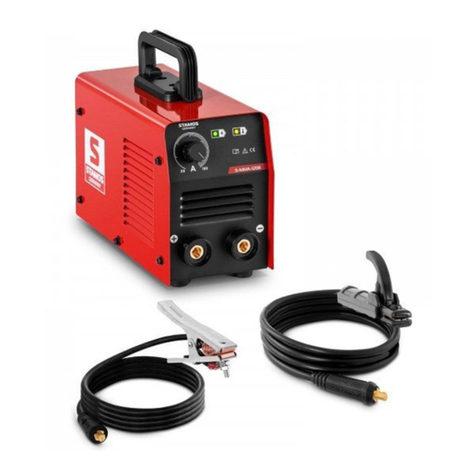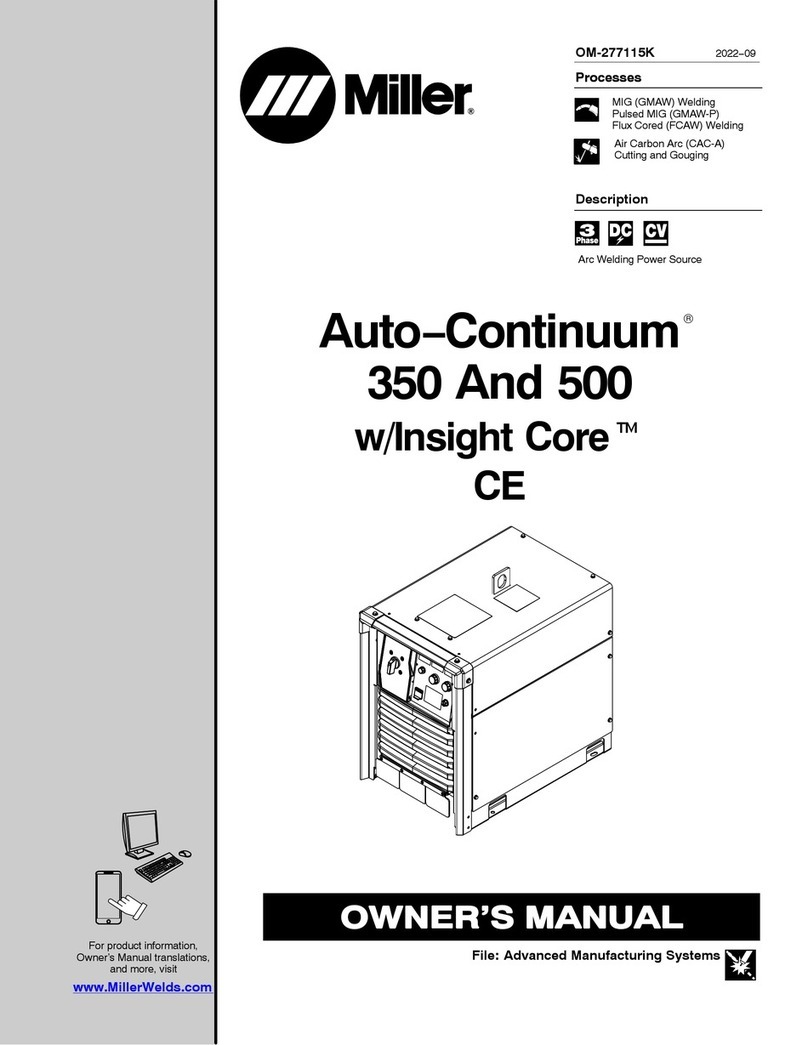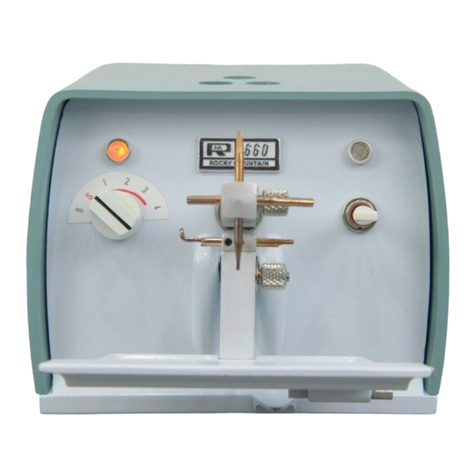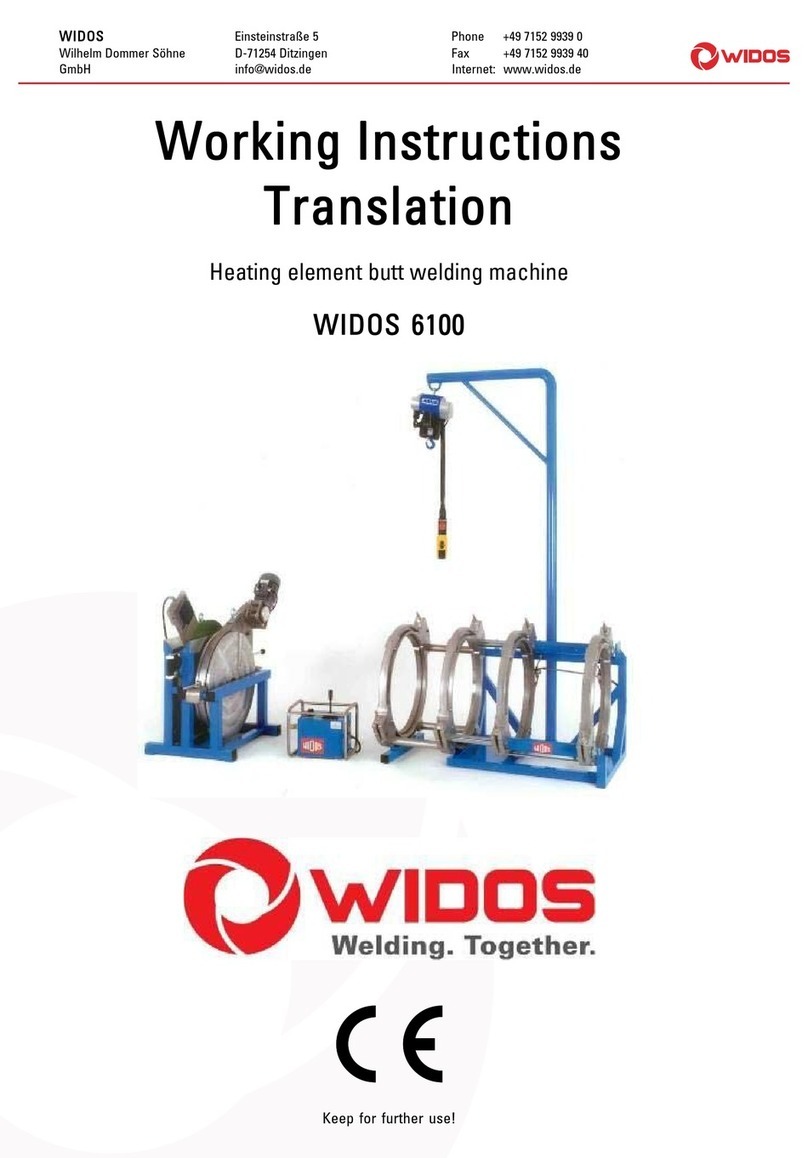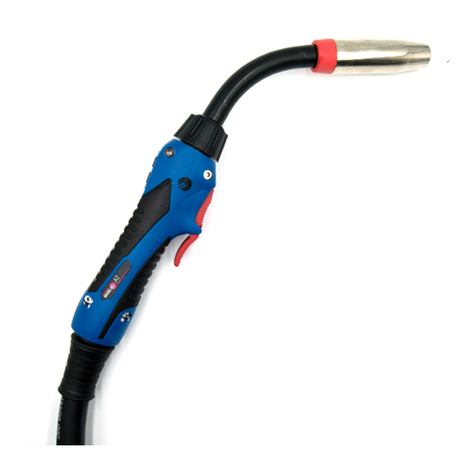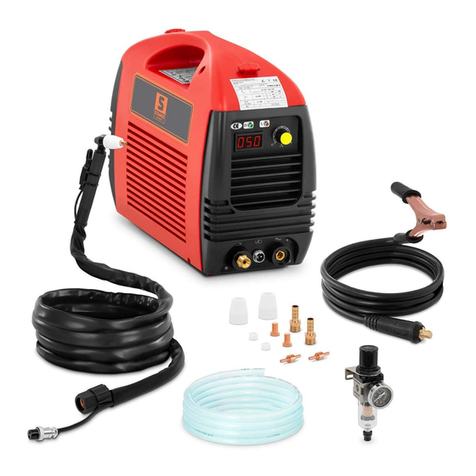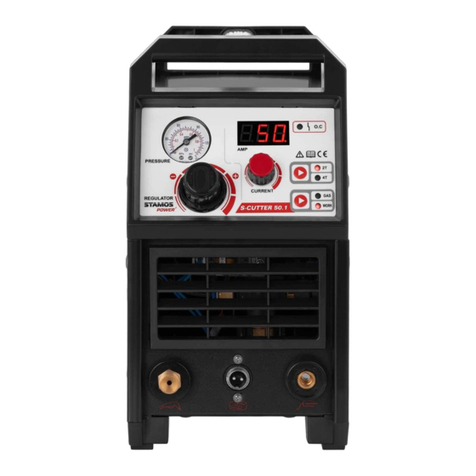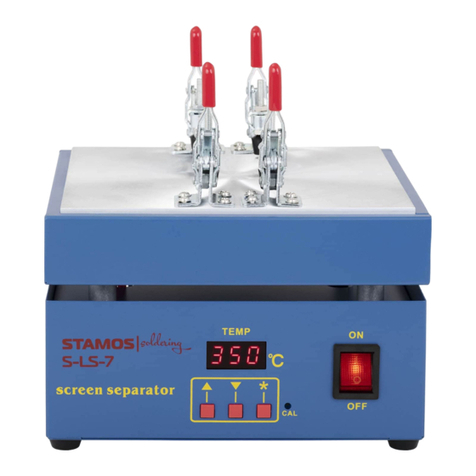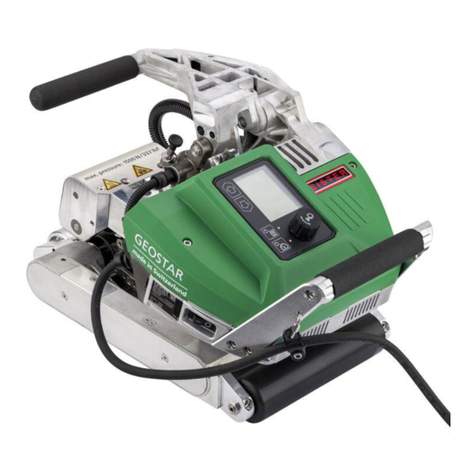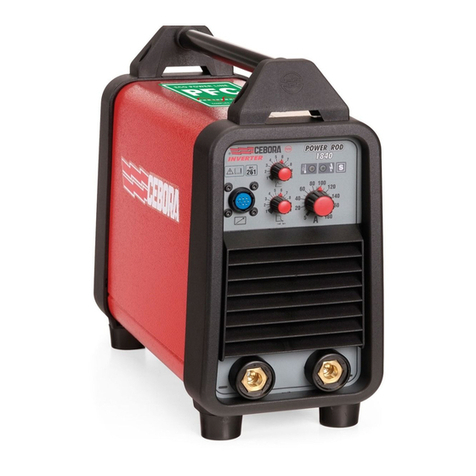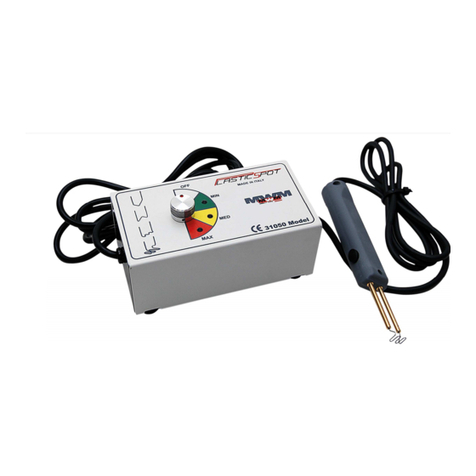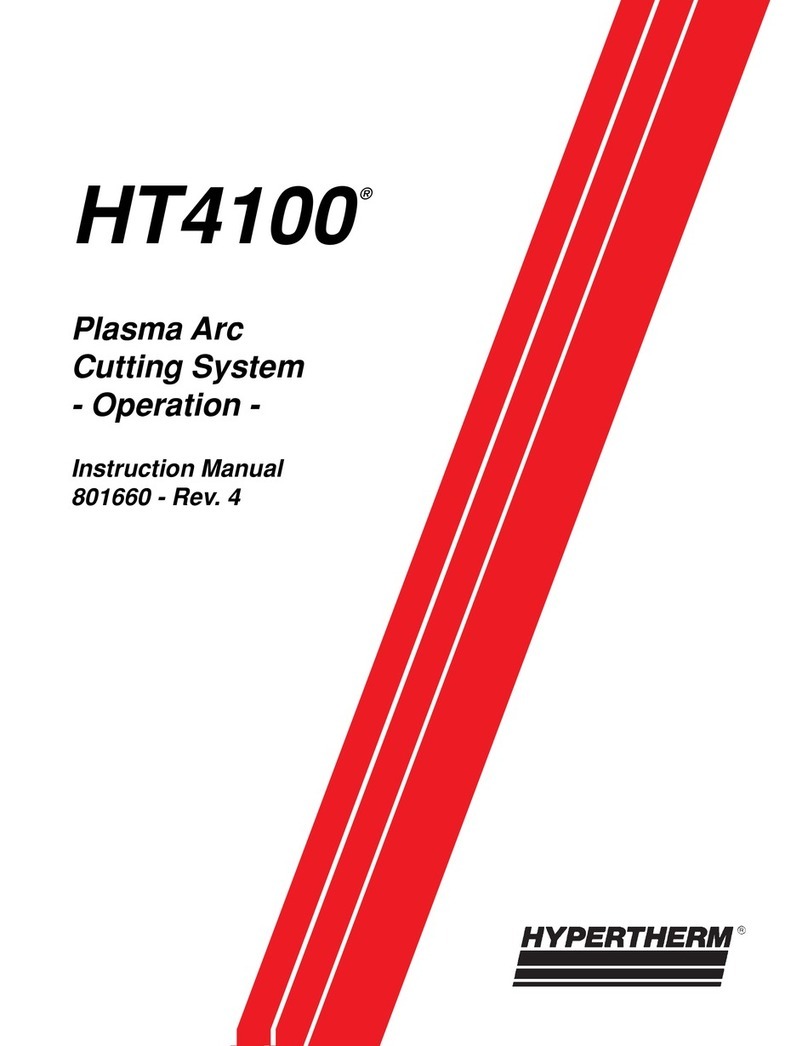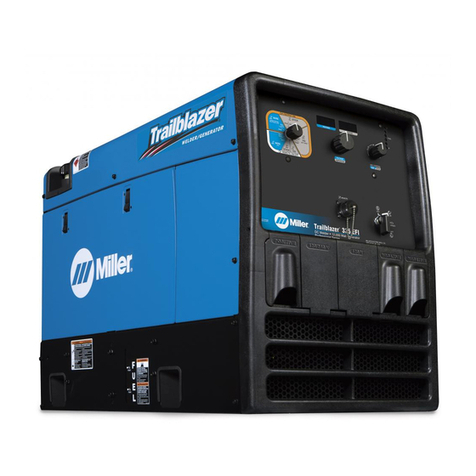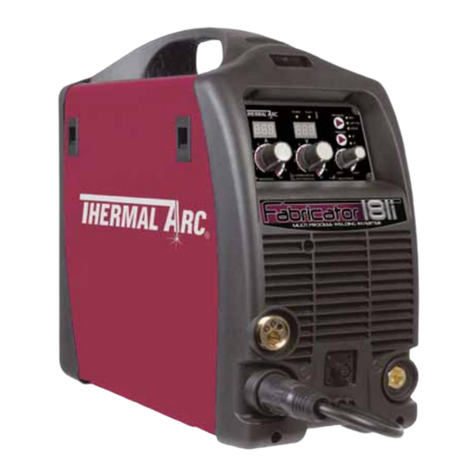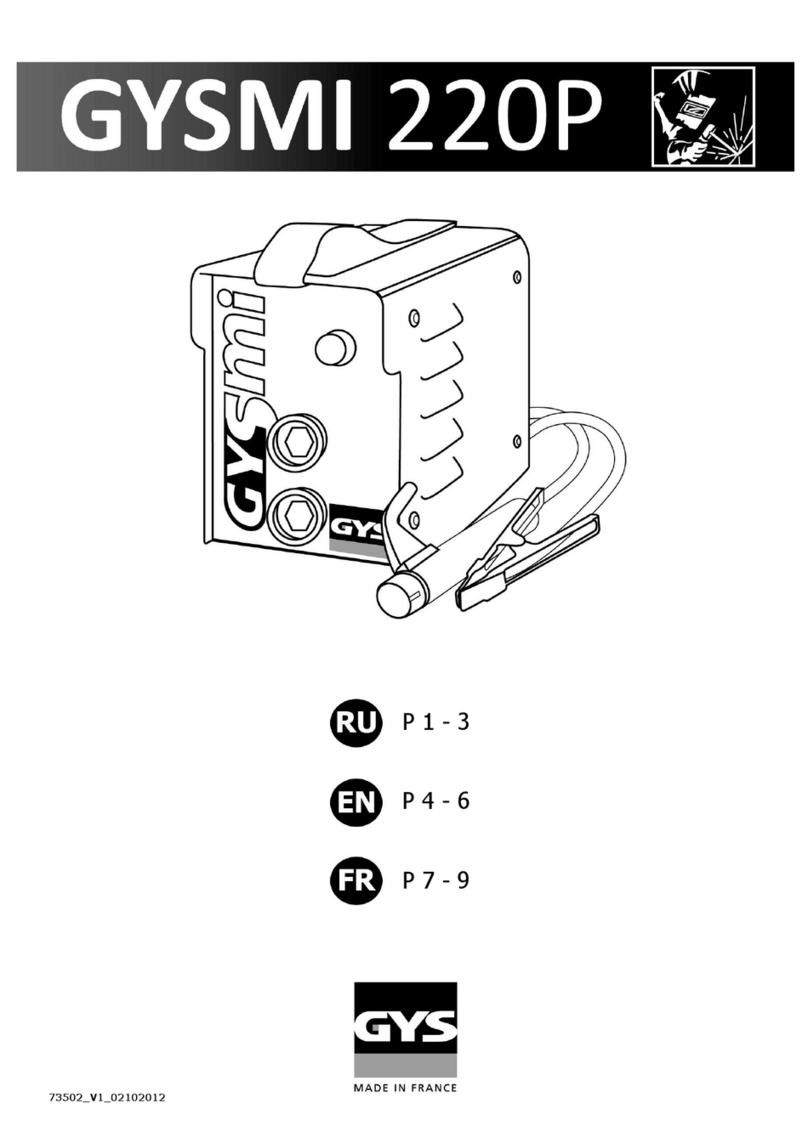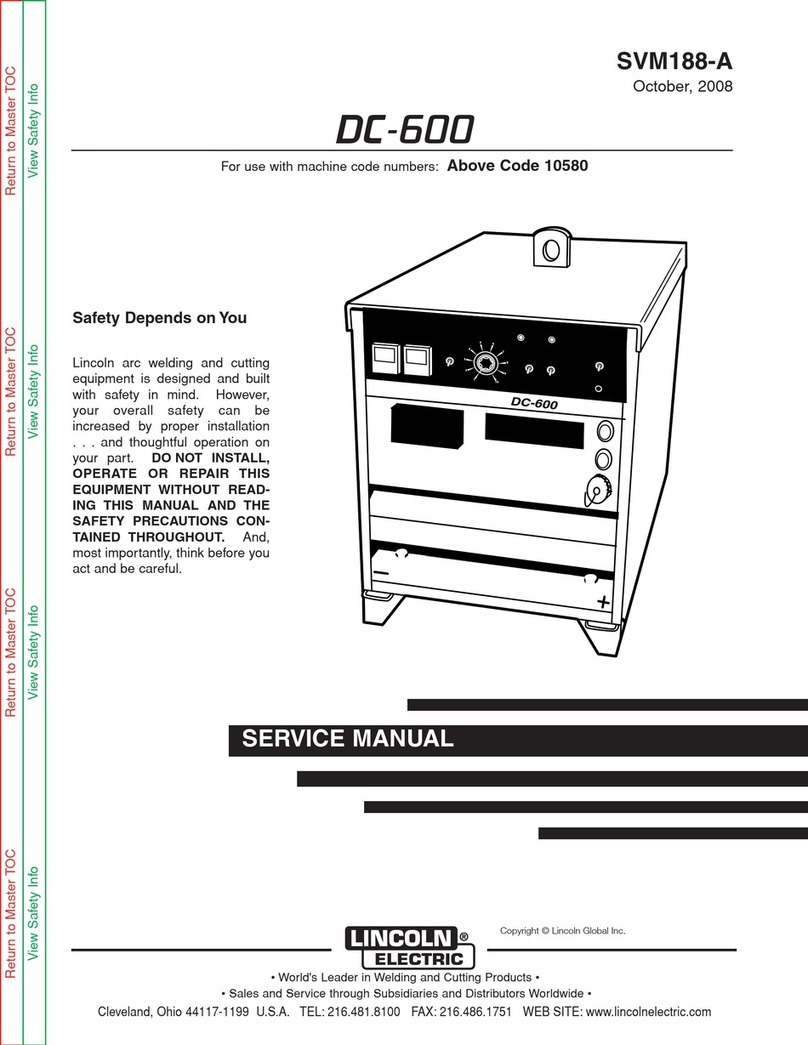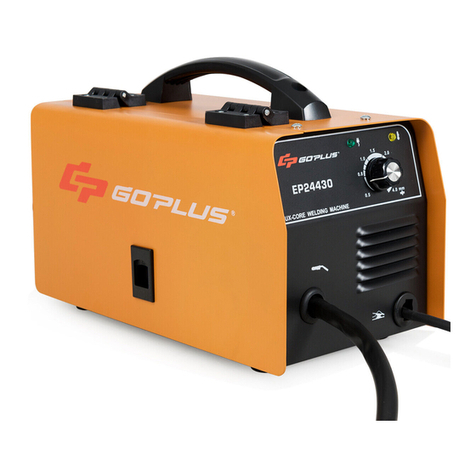
6 7
Rev. 04.04.2022 Rev. 04.04.2022
b. Remove or make safe all combustible materials for a radius of 35 feet
(10 meters) around the work area. Use a re resistant material to cover or
block all open doorways, windows, cracks, and other openings.
c. Enclose the work area with portable re resistant screens. Protect combu
stible walls, ceilings, oors, etc., from sparks and heat with re resistant
covers.
d. If working on a metal wall, ceiling, etc., prevent ignition of combustibles on
the other side by mobbing the combustibles to a safe location. If relocation
of combustibles is not possible, designate someone to serve as a re watch,
equipped with a re extinguisher, during the welding process and for at least
one half hour after the welding is completed.
e. Do not weld or cut on materials having a combustible coating or
combustible internal structure, as in walls or ceilings, without an approved
method for eliminating the hazard.
f. Do not dispose of hot slag in containers holding combustible materials.
Keep a re extinguisher nearby and know how to use it.
g. After welding or cutting, make a thorough examination for evidence of re.
Be aware that easily visible smoke or ame may not be present for some
time after the re has started. Do not weld or the re has started. Do not
weld or h. Dangerously reactive or ammable gases, vapors, liquids, and dust.
i. Provide adequate ventilation in work areas to prevent accumulation of
ammable gases, vapors, and dust. Do not apply heat to a container that
has held an unknown substance or a combustible material whose contents,
when heated, can produce ammable or explosive vapors. Clean and purge
containers before applying heat.Vent closed containers, including castings,
before preheating, welding, or cutting
9.Avoid overexposure to fumes and gases.Always keep your head out of the fumes.
Do not breathe the fumes. Use enough ventilation or exhaust, or both, to keep
fumes and gases from your breathing zone and general area.
• Where ventilation is questionable, have a qualied technician take an air samplingto
determine the need for corrective measures. Use mechanical ventilation to improve
air quality. If engineering controls are not feasible, use an approved respirator.
• Work in a conned area only if it is well ventilated, or while wearing an air-supplied
respirator
• Follow OSHA guidelines for Permissible Exposure Limits (PEL’s) for various fumes
and gases.
• Follow the American Conference of Governmental Industrial Hygienists
recommendations for Threshold LimitValues (TLV ’s) for fumes and gases.
• Have a recognized specialist in Industrial Hygiene or Environmental Services check
the operation and air quality and make recommendations for the specic welding
or cutting situation.
10. Always keep hoses away from welding/cutting spot. Examine all hoses and
cables for cuts, burns, or worn areas before each use. If any damaged areas are
found, replace the hoses or cables immediately.
EN
11. Read and understand all instructions and safety precautions as outlined
in the manufacturer’s Manual for the material you will weld or cut.
12. Proper cylinder care. Secure cylinders to a cart, wall, or post, to prevent them
from falling.All cylinders should be used and stored in an upright position. Never
drop or strike a cylinder. Do not use cylinders that have been dented. Cylinder
caps should be used when moving or storing cylinders. Empty cylinders should be
kept in specied areas and clearly marked “empty.”
13. Never use oil or grease on any inlet connector, outlet connector, or
cylinder valves.
14. Use only supplied Torch on this Inverter Air Plasma Cutter. Using
components from other systems may cause personal injury and damage
components within.
15. People with pacemakers should consult their physician(s) before using this
product. Electromagnetic elds in close proximity to a heart pacemaker could
cause interference to, or failure of the pacemaker.
16. USE PROPER EXTENSION CORD.
Make sure your extension cord is in good condition.When using an extension
cord, be sure to sue one heavy enough to carry the current your product will
draw.An undersized cord will cause a drop in line voltage resulting in loss of
power and overheating.A 50 foot extension cord must be at least 12 gauges in
diameter, and a 100 foot extension cord must be at least 10 gauges in diameter. If
in doubt, use the next heavier gauge.The smaller the gauge number, the heavier
the cord.
Manual arc welding
Manual arc welding, briey called MMA (Manual Metal Arc Welding), is one of the oldest
electric welding procedures used for metallic materials, which is still used today.
In 1891 Nikolai Gavrilovich Slawjanow replaced the carbon electrodes commonly used
in his time for arc welding by a metal rod that was both the arc carrier and ller metal.
Since the rst rod electrodes were not coated, the weld itself was not protected from
oxidation. Therefore these electrodes were difcult to weld. The electric arc burning
between an electrode and the workpiece is used as the heat source for welding.The
high temperature of the arc melts the material in the welding area.The rod electrode
simultaneously melts off acting as a ller material to form the weld bead. Both AC and
DC currents can be used to power the process.
Rod electrodes are used as ller material in arc welding. For each welding type there
are appropriate electrodes, e.g. for build-up welding and joint welding. Information
concerning the nature, characteristics and application of an electrode is provided by
the brief label, which is printed on each electrode package.The gases produced by the
melting of the electrode coating are used to stabilise the arc and separate the liquid
metal transfer in the arc from the inuences of the surrounding air and to reduce the
burning of alloy components.Apart from that the melted coating also produces slag.
EN











